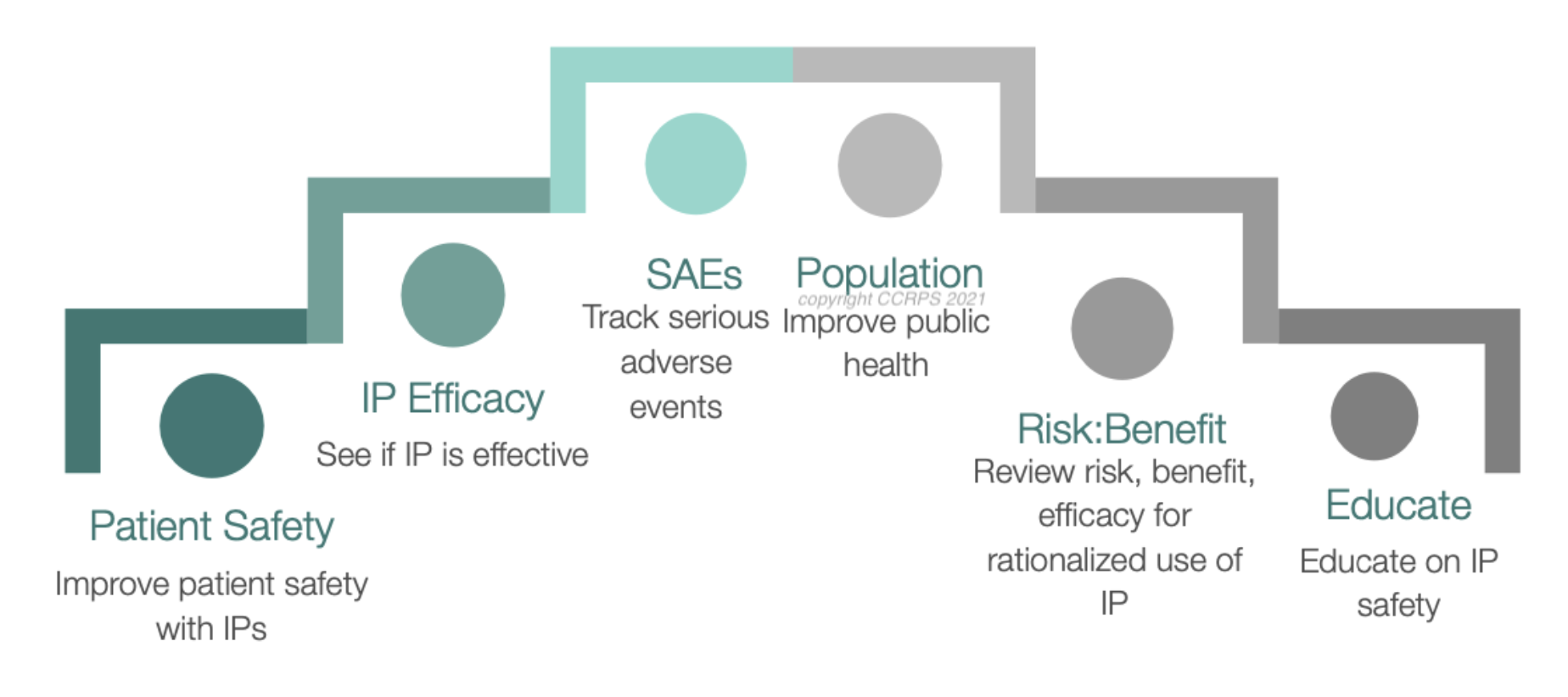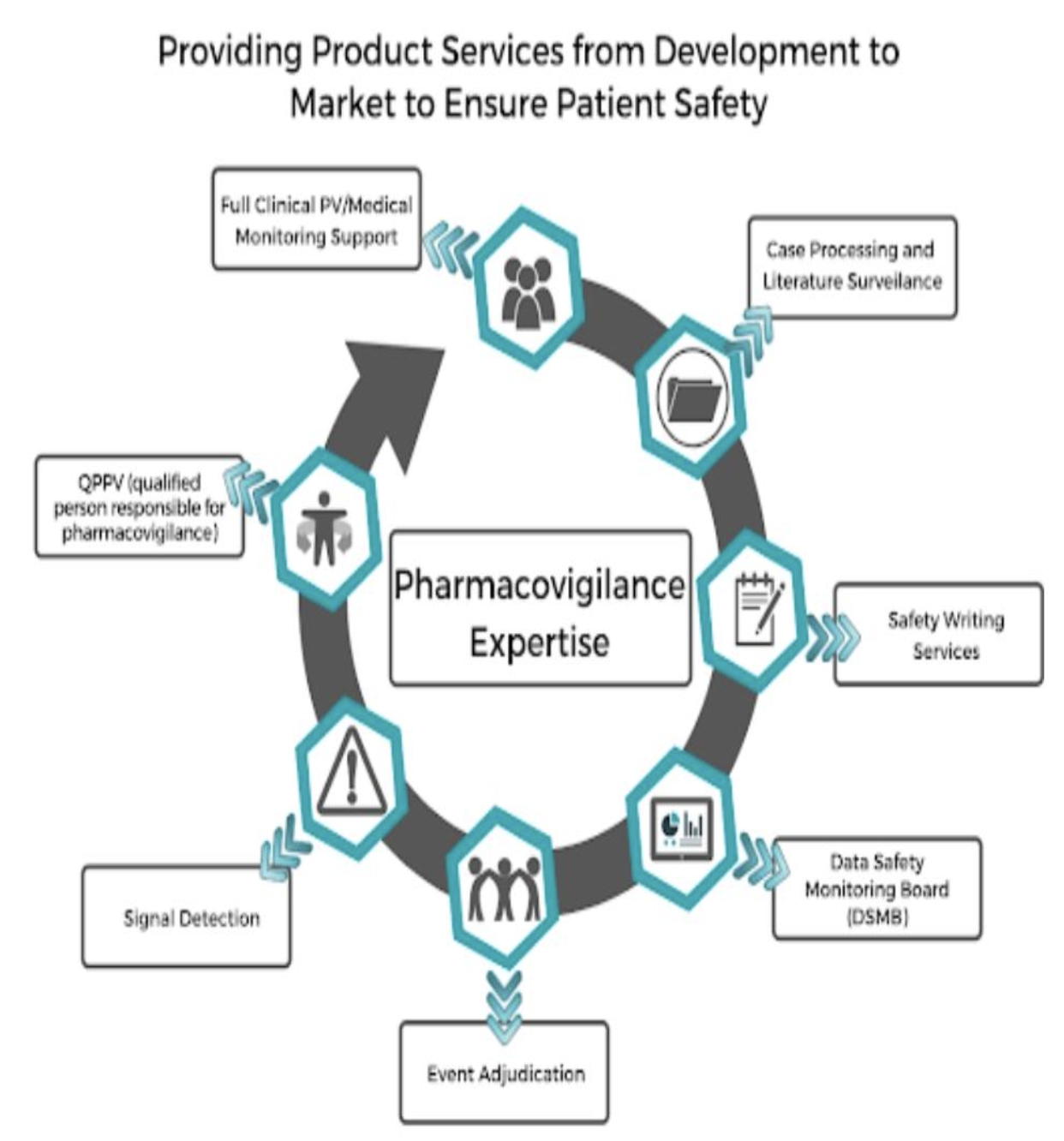5 Step Guide to Becoming a Successful PV Professional
Pharmacovigilance (PV) is the science of monitoring the safety of a drug and is also known as drug safety. It is a part of clinical research and there is much to explore about it. PV specialists identify and report a medicine’s side effects during and after the clinical study. Like clinical research, PV is a relatively uncharted field with many career options. As per the reports, the pharmacovigilance market is set to reach $12.98 Billion mark by the year 2027. This field is for everyone—from doctors to IT and statisticians. In this article, we will discuss PV field in details along with education requirements and career advice in 5 steps.
5 Steps to Become a PV Professional
Following are the steps to become a successful PV professional:
Step One: Undergraduate Degrees
For most positions in PV some level of higher education is required. You need to be sure you have the necessary interest and knowledge before you make a hire as the pharmaceutical industry is highly regulated.
Depending on what kind of career you want to have in future, an associate’s degree or a bachelor’s degree can lead you to that goal. If you plan on working in clinical positions, then a bachelor’s in life sciences or health related studies will be very valuable. But if you are more interested in non-clinical positions like IT or statistics, then computer science or mathematics will get you where you need to be.
During this time, try to find any direct ways to get clinical research work. University hospitals are a good place to start for research assistant or patient recruiter positions. It is quite difficult to get into the PV field, so relevance of experiences and connections will be a great advantage in future. You might also want to add a Clinical Trials Assistant Training course to your resume.
Step Two: Graduate Degrees
For better career or for specific positions, like a PV physician, one may consider graduate programs. MDs, DOs, RPhs, PharmDs, RNs, LPNs, DDS (DMD) and DVMs can easily bring their degrees and work experience into PV positions.
On the other hand, many people do it for a master’s or PhD because they boost one’s salary and lead to more career options. If you decide to pursue your degree, you should take advantage of your school’s resources and industry connections while they are still available to you. More advanced positions might require certain certifications, for instance, the Advanced Clinical Research Project Manager Certification or the Advanced Principal Investigator Physician Certification.
Step Three: Apply for Jobs
Here comes what many consider the hardest part of a PV career: breaking into the field. PV is a competitive field, and here’s how you stay ahead:
Have any clinical research experience? Get a reference from your supervisor. This is one of the best ways to grab an employer’s interest.
If you have attended a graduate PV program, it is recommended that you avail yourself of your school's placement and networking support to assist you in securing employment.
A professional association join. Find out how practicing professionals landed their first job. Check the job board to find out if there are positions available that are not available on other job boards.
Stay current with the field and knowledge of practices and trends. One way to prove your enthusiasm and dedication is to take advantage of online courses. For instance, CCRPS provides an inexpensive PV certification program along with a free ICH GCP program. Either one might be able to bring something to your resume.
Step Four: Work and Learn
PV is an ever-growing and innovative field. When you get your first job, you will have to transition from school to work and find out what was not taught in class.
As you work, take in the environment around you and contemplate your long-term goals. Some factors you should consider are:
What is the work culture like?
Do you have a mentor who can guide you through this career?
Does your work environment support your professional growth?
They can be important as you start to apply for senior roles, particularly if you are looking to get into line management roles. If you realise that the company goals are not for you then there is no point in looking for another job there.
Most of all, when you enter the new job, it is crucial that you go on to further work on your contacts and continue to update your knowledge about the industry. The work you do for yourself will ensure that the people who can help you get where you want to be notice you. You might want to think about getting a Medical Monitor Certification to improve your chances even further.
Step five: Applying for Senior Positions
This is because PV professionals with 5–8 years of experience will generally attempt to secure senior positions that come with a higher salary and more perks. Although senior positions are usually quite fierce, you would have gained a great deal of experience and planning by now. When you are applying for senior positions, here are some aspects to consider:
Your work experiences and how they fit into the position you want. Consider what sets you apart from other applicants.
When choosing references, they should be able to talk about your good and bad sides to the employer. This might appear counterintuitive, but hiring managers know that a reference who cannot talk about your weaknesses is probably not going to know your strengths. To them, an honest reference is the mark of a good working relationship. This will help them reason the strength in your communications skills and work ethnic from your communications.
Your skills and qualifications should not only match the job description, they should demonstrate that you are going to be a valuable member of their team.
Conclusion
In conclusion, a career in pharmacovigilance offers promising opportunities for those interested in ensuring the safety and efficacy of pharmaceutical products. With the right education, certifications, and practical experience, you can make significant contributions to public health and patient safety. Organizations like CCRPS provide valuable resources and certification programs that can enhance your qualifications and prepare you for advanced roles in the field. As the demand for pharmacovigilance professionals continues to grow, investing in your skills and network through such platforms can greatly enhance your career prospects. Embrace the challenges and continuous learning opportunities that pharmacovigilance offers to build a rewarding career in this vital sector of healthcare.
Explore Courses for Clinical Research Career
Courses Available:
Frequently Asked Questions (FAQs)
-
To work in pharmacovigilance, you generally need a degree in life sciences, pharmacy, nursing, or a related field. Additional qualifications can include a master's degree or specific certifications related to clinical research or drug safety. Experience in clinical trials or in a healthcare setting can also be highly advantageous.
-
Starting a career in pharmacovigilance involves obtaining the necessary educational background, gaining relevant experience, and possibly completing specific certifications in pharmacovigilance. Networking through professional associations and attending industry conferences can also help break into the field. It's beneficial to start with entry-level positions in clinical research or related areas to build relevant experience.
-
A pharmacovigilance officer monitors the safety of pharmaceutical products and ensures compliance with drug safety regulations. Their duties include collecting, analyzing, and reporting adverse effects of medications, managing safety data, and contributing to safety risk assessments. They also play a crucial role in the development and implementation of drug safety protocols to protect patients.
-
Pharmacovigilance is considered a good career choice for those interested in contributing to public health and patient safety. The field offers a variety of roles across scientific, regulatory, and data analysis domains and is known for its job stability and growth potential, especially as the global demand for safer pharmaceutical products increases.
-
The career prospects in pharmacovigilance are strong and varied, ranging from entry-level roles such as drug safety associates to senior positions like pharmacovigilance managers or directors. Professionals can also specialize in areas like signal detection, risk management, or epidemiology. The growing focus on drug safety worldwide ensures ongoing demand for skilled professionals in this field.
















